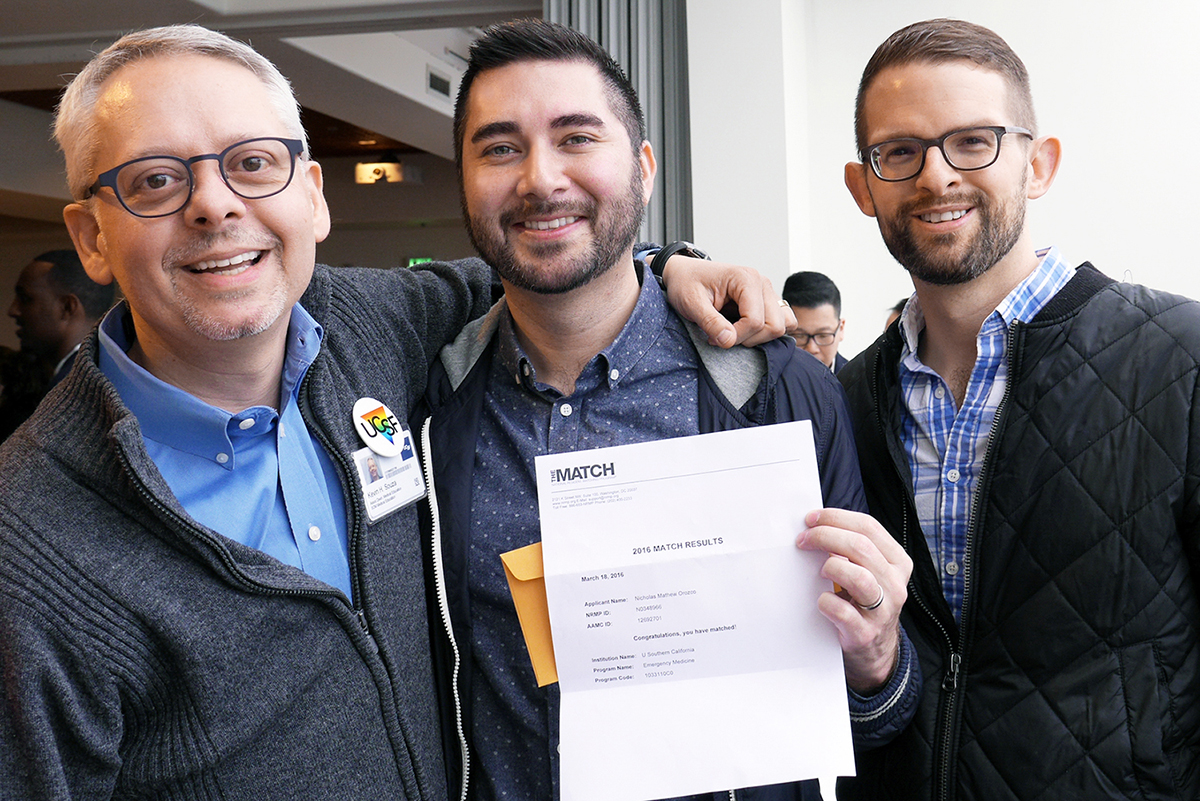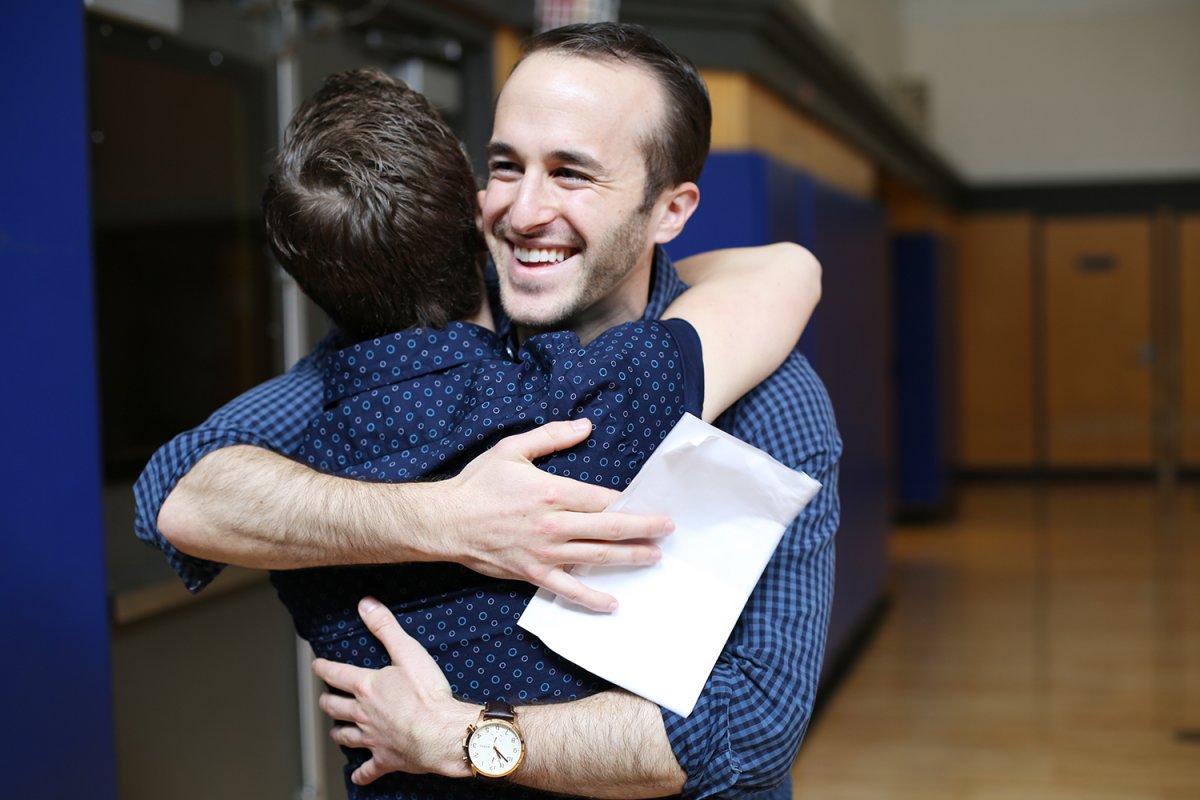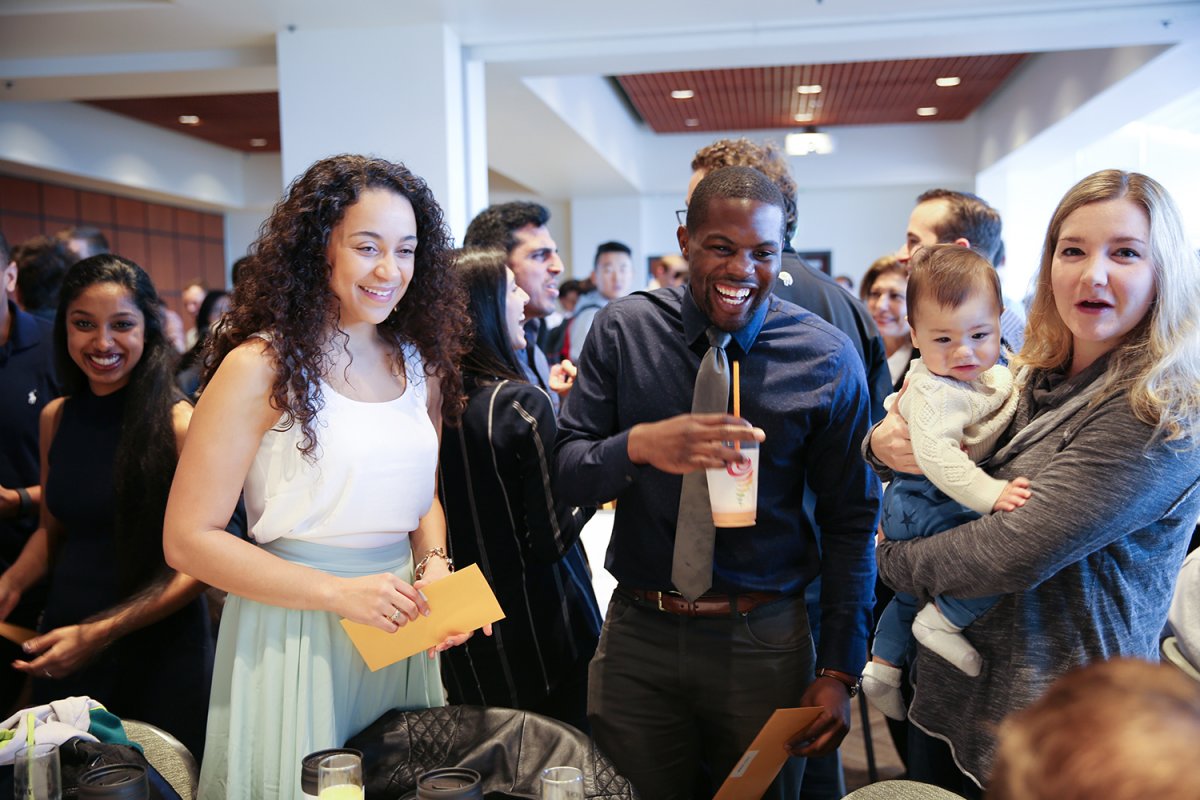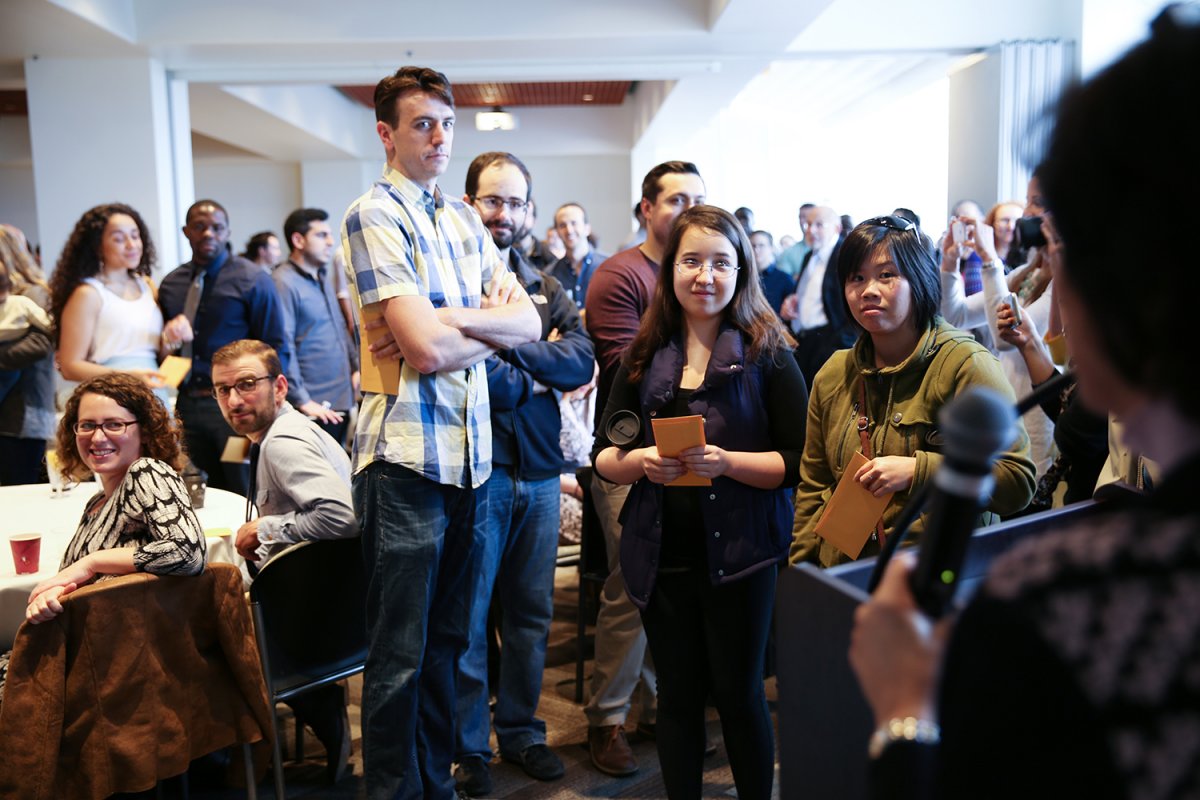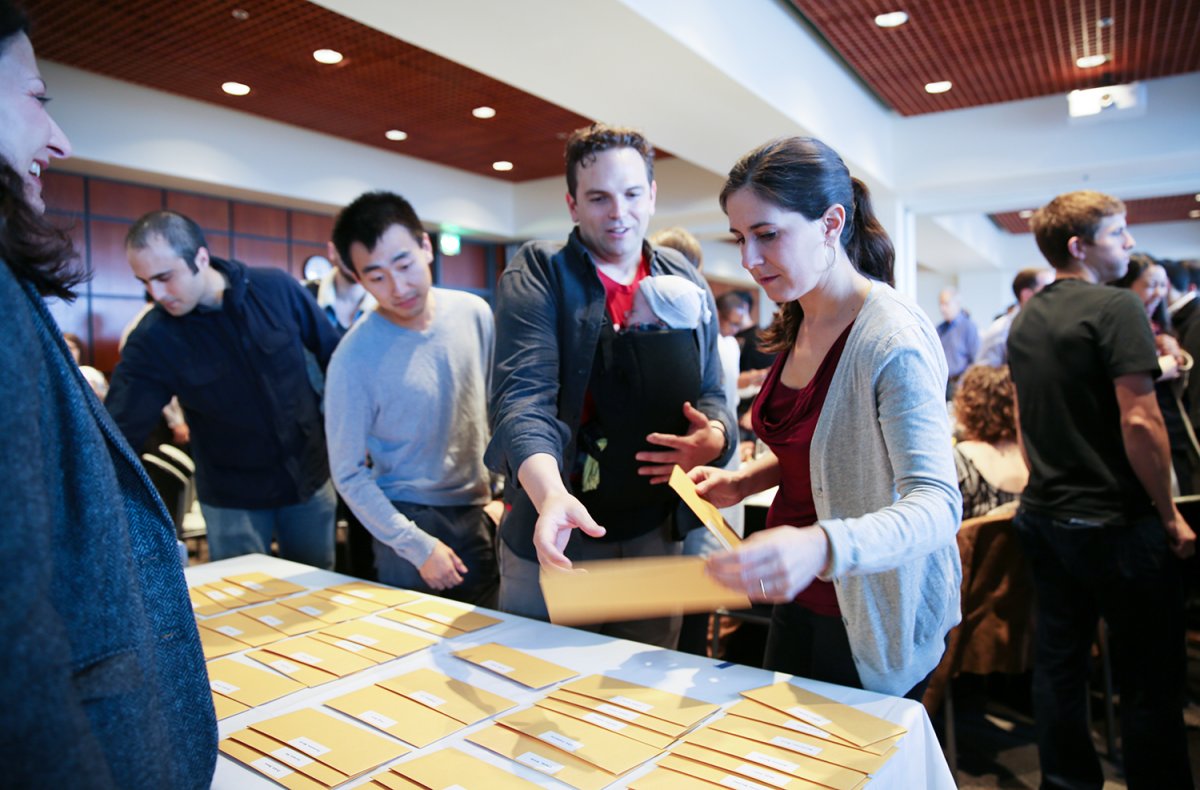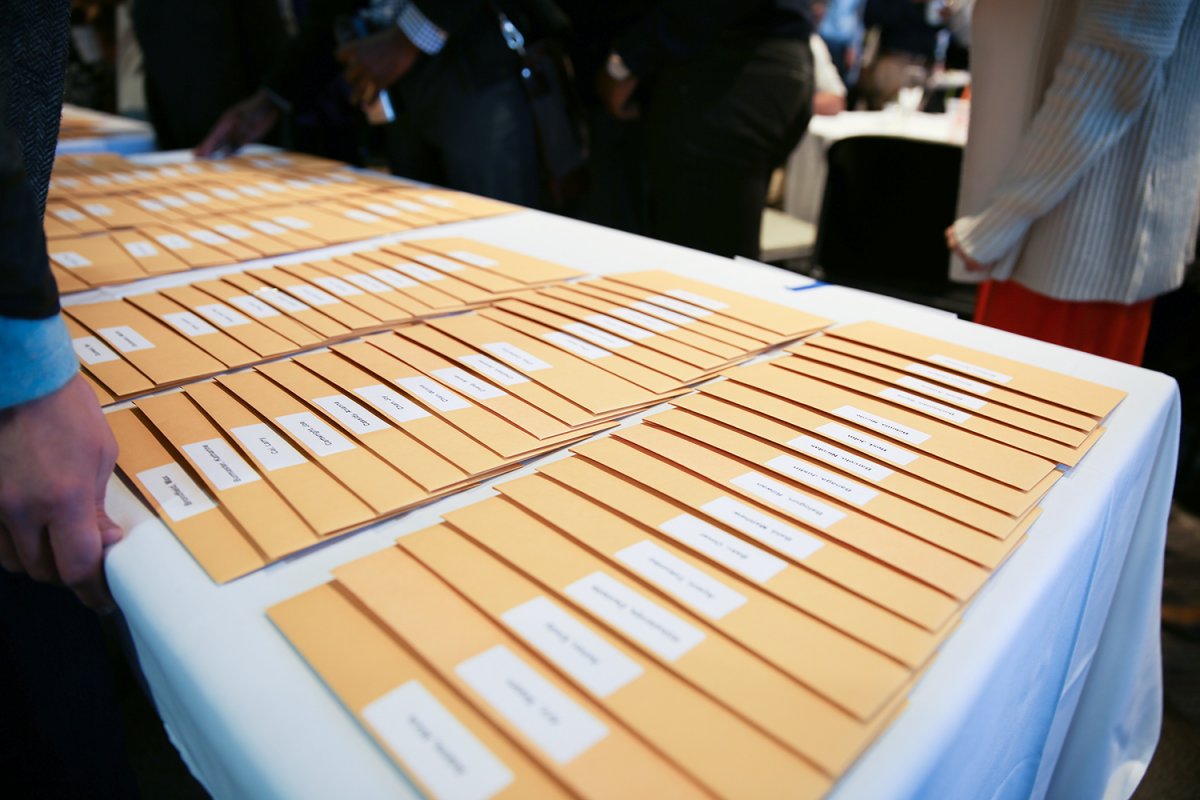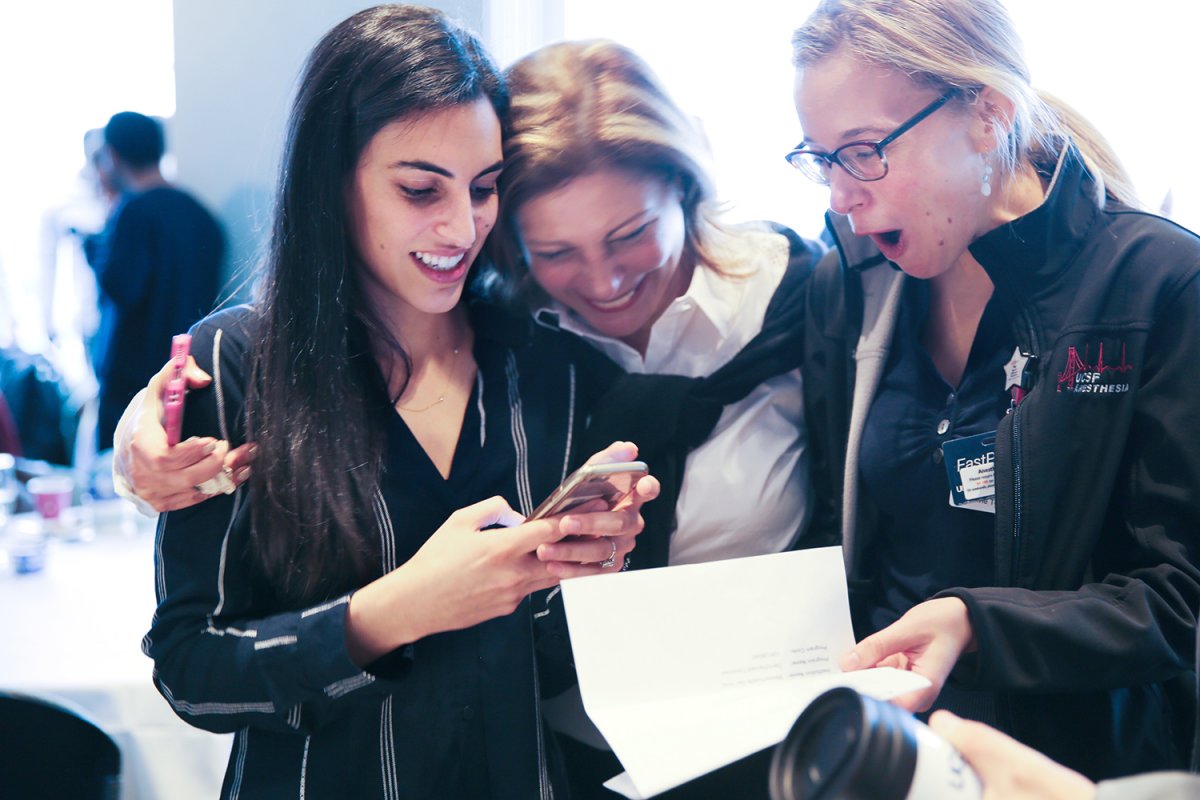Match Day 2016 Brings Elation and Relief to Medical Students
Every year on the third Friday of March, thousands of fourth-year medical students across the country take part in a ritual that some feel is more exciting and a lot more nerve-wracking than graduation. On Match Day at exactly the same time (9 a.m. on the West Coast), they each open an envelope to find out where they will train as resident physicians for the next three to five years.
It is a solemn moment – for about two seconds – followed by collective excitement, relief and even tears, interspersed by hugs and a frenzy of phone calls and social-media posts.
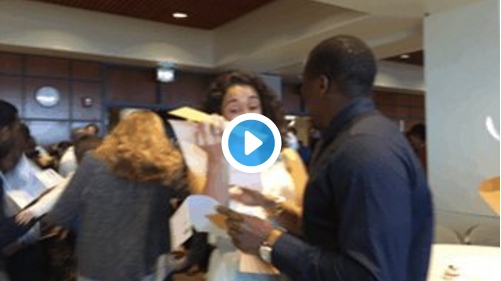
More from Match Day
See more images and social-media posts from Match Day at UCSF's Storify page and watch a video from the event below.
Glenn Wakam and his partner, Kiyanna Williams, were among 10 couples in the class of 2016 who attempted to match together at the same or adjacent institutions, a process that is even more unnerving than matching singly. Of Match Day, Glenn said, “It was incredible. I couldn’t have been more thrilled. It’s this extreme elation, realizing you’ve reached your dreams.” Glenn is headed for a surgery residency at the University of Michigan, where Kiyanna matched in dermatology.
“Opening that envelope felt very surreal,” said Shalini Dixit, another half of a couple-match. “It’s a moment I thought about for a long time. Match Day is the culmination of medical school. There’s a lot riding on that one day.” She and her significant other, Kevin Kane, were relieved to both get their first choice; Shalini will be staying at UC San Francisco and Kevin will go to Stanford University; both will train in internal medicine.
Associate Dean of Students Maxine Papadakis, MD, acknowledged the special complications inherent when two people try to match together. “Students who want to match as a couple generally apply more broadly than individuals, which means more travel and more coordination of schedules. The good news,” she said, “is that UCSF’s track record with the couples match is terrific, and it is wonderful to see the happy couples on Match Day.”
Having a partner in medical school has many benefits. Glenn and Kiyanna met as students at UCSF. “It’s been amazing to go through the process with someone to look to and to lean on,” she says.
Finding a partner in medical school may be a match made in heaven; the residency match, however, is made by a computer, via an algorithm developed by the National Residency Match Program (NRMP). Applicants rank their top residencies while those programs similarly rank applicants, and the computer attempts to make the best possible match. The NRMP prides itself as being 100 percent objective, accurate and committed to a fair and transparent process.
The process has worked well at UCSF, with students benefitting from the Medical School’s stellar reputation. Of the 177 who matched this year, 79 are headed for primary care tracks in family medicine, internal medicine and pediatrics. 98 students matched into specialty programs, with the biggest draws this years being emergency medicine, radiology and neurology.
As a state institution, UCSF is committed to train doctors for California. Two-thirds of the class, 109 new physicians, will in fact finish their training in-state and contribute to the health care workforce throughout their residencies and likely beyond.
